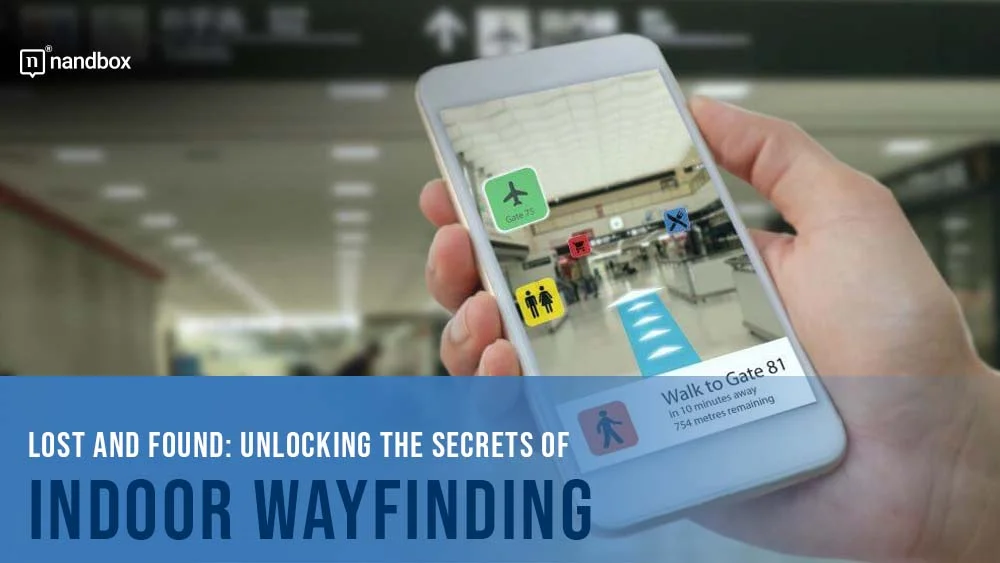In the modern world, navigating through vast indoor spaces like shopping malls, airports, hospitals, and museums can be a daunting task. Thankfully, indoor wayfinding systems have emerged as a powerful solution to this challenge. In this article, we will take you on a journey through some remarkable success stories of indoor wayfinding implementations. These real-life examples demonstrate how indoor wayfinding technology has transformed complex spaces, making them more accessible and user-friendly for visitors.
1. The Role of Indoor Wayfinding in Complex Spaces
It plays a crucial role in guiding people through large and intricate indoor environments. Not only does it help users find their way efficiently, saving time and reducing frustration, but it also enhances the overall user experience. By integrating indoor maps, interactive kiosks software, and mobile applications, these systems ensure that no visitor feels lost amid the vast spaces.
Success Story 1: Transforming a Shopping Mall Experience
Imagine entering a vast shopping mall with countless stores and floors, not knowing where to begin your shopping spree. The implementation of an advanced system changed the game for one particular shopping mall. With interactive digital maps and clear signage, shoppers can now easily locate their favorite stores, restaurants, and amenities. The system even offers personalized recommendations based on visitors’ preferences, creating a seamless and enjoyable shopping experience.
Success Story 2: Seamless Navigation in Airports
Airports can be overwhelming for travelers, especially during peak travel times. However, one forward-thinking airport has introduced an indoor wayfinding solution to alleviate navigation challenges. With this system in place, it provides real-time information on flight gates, baggage claim areas, and other crucial points. As a result, travelers can now confidently move through the airport, reducing stress and ensuring a smoother journey from check-in to boarding.”
Success Story 3: Enhancing Healthcare Facility Navigation
Finding the right department or patient room in a sprawling hospital complex can be stressful for patients and visitors. A leading healthcare facility implemented an indoor wayfinding system to address this issue. The system offers turn-by-turn directions, helping patients, visitors, and medical staff navigate the hospital efficiently. This technology has not only improved patient satisfaction but also optimized the workflow for hospital staff. Virtual data rooms have revolutionized the way businesses handle sensitive information, offering a secure and organized environment for data storage and sharing.
2. Designing Successful Indoor Wayfinding Systems
Behind every successful indoor wayfinding implementation lies meticulous planning and design. Creating an intuitive and user-friendly interface, incorporating visually appealing signage, and integrating real-time data are all critical factors in ensuring the success of indoor wayfinding systems. Leveraging indoor map system can significantly enhance the user interface, making navigation intuitive and seamless in large indoor environments. By prioritizing the needs and preferences of users, these systems become an indispensable asset for any complex indoor environment.
3. User Feedback and Satisfaction
User feedback has been overwhelmingly positive across these success stories. Visitors have expressed gratitude for the convenience and confidence that indoor wayfinding systems provide. The elimination of confusion and the ease of finding desired locations have significantly contributed to enhanced user satisfaction and positive impressions of the facilities.
4. Future Trends and Innovations
As technology continues to advance, wayfinding systems are poised for even greater improvements. The integration of augmented reality (AR) and artificial intelligence (AI) is on the horizon, promising to revolutionize the indoor navigation experience. These advancements will further personalize and optimize wayfinding, ensuring smoother journeys for all users.
Conclusion:
Indoor wayfinding success stories demonstrate the transformative impact of this technology on complex spaces. Across various environments, from shopping malls to airports and healthcare facilities, the implementation of effective wayfinding systems has revolutionized navigation and significantly enhanced user experiences. As technology continues to evolve, the future of indoor wayfinding looks promising, with innovations that will further elevate the way we navigate and explore large indoor environments.





